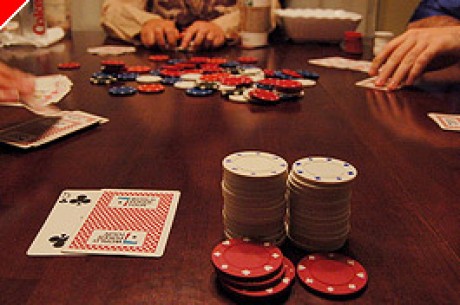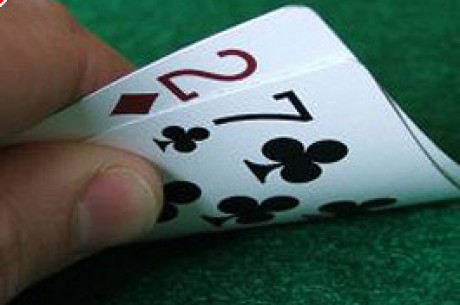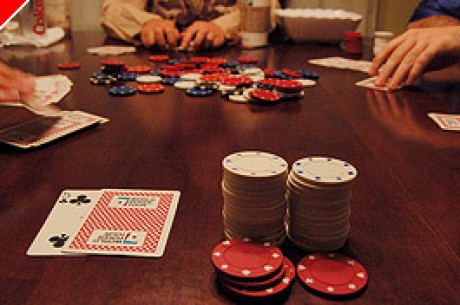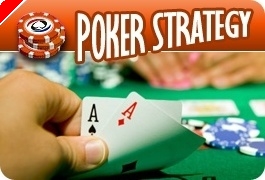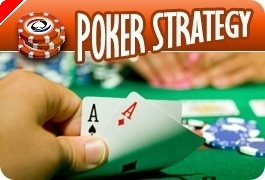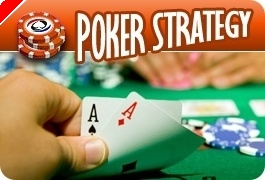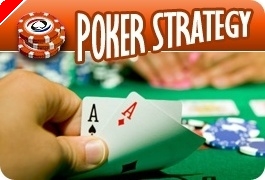The 'Other Games' of Poker: Pot-Limit Draw High
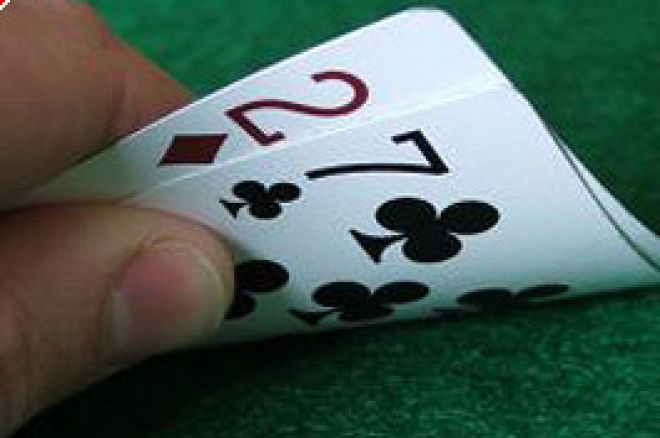
While playing on Poker Stars a few weeks back, I wait-listed myself for what I thought was my usual 2-7 triple draw game. It was only when a seat finally came open for me that I noticed my mistake– I'd clicked the wrong tab to begin with and was about to be dealt into my first ever game of pot-limit 5-card draw.
"What the hell," I thought. "I'm always bemoaning the fact that I seem to get dealt such great high hands in deuce-to-seven... this will be like triple draw in reverse!"
Well... sort of.
Just when you thought draw poker was dead, pot-limit 5-card draw is gaining steam online as a no-limit hold'em alternative. Popular especially among European players, more than two dozen pot-limit draw games can be found running simultaneously on Poker Stars around the clock at buy-in levels ranging from $50 ($.25-.50 blinds) to $2,000 ($10-20 blinds). That's more than double the number of 2-7 triple draw cash games that are typically running on Stars, and yet triple draw seems to get all the credit for being the "other game" du jour. The bulk of the online PLD games are concentrated at the lower limits, and with good reason. For players who want to try a big-bet game on a short bankroll, pot-limit draw is a great choice. There are fewer decisions to be made, players' hands are more clearly defined than they are in hold'em, and there are only two betting rounds, resulting in a quick pace and pots about 1/3 to ½ the size of pots at the same limit in NLHE.
Rules
Online pot-limit draw is played six-handed with a button and blinds. Each player is dealt five cards face-down and players have the option to call, raise, or fold their hand. After this first round of betting, players may discard from one to five of their cards and receive new ones in return, or they may "stand pat" and not draw at all. Another round of betting ensues, followed by a showdown, where the player with the best five-card high hand wins the pot. Bets and raises both before and after the draw are limited to the size of the current pot.
Basic Strategy/Starting Hands
Starting hand selection in pot-limit draw is a bit different than in limit draw. In terms of how to play a hand, players have many more choices in a big-bet format than they would in a fixed limit structure, and while playing drawing hands (open-ended straight draws and one-card flush draws) in limit 5CD is usually cautioned against, such hands can often be worth playing cheaply in pot-limit given the implied odds. For beginners, don't think about entering a pot in early position with anything less than a pair of aces, and come in for a raise– don't limp. In middle position add kings and queens to your arsenal as solid open-raising hands and in the cutoff and on the button, consider opening with jacks or tens. Things get a little more 'dicey' in the blinds. If the action is folded to you in the small blind, consider raising with a pair of sevens or better, but in this situation, it's also OK to limp in with small pairs (22-66), A-K or A-Q. For players in the big blind facing a raise, it's time to take into consideration how your opponents are playing, the range of hands they will open-raise with, the position the raise is coming from and the size of the raise itself when deciding whether or not to call.
While pre-flop raises in NLHE tend to fall in the range of 3-5 big blinds, opening raises in pot-limit draw are more in the 2-3 BB range. The reason for this is not the pot-limit structure, but the fact that players want to encourage action with the high-pair hands they'll typically open with, not discourage it. If I'm UTG+1 with a pair of kings, I'll typically open for 2-2.5 BB depending on the players behind me, hoping to get multiple callers holding smaller pairs like queens or jacks. I'm in great shape against these hands before the draw and I want to keep my customers and build a nice pot, not scare them away.
Players will glean the most information about their opponents' hands on the draw by virtue of how many cards they take. Typically, a player drawing three has one pair, a player drawing one has two pair, a straight draw, or a flush draw, and a player drawing two either has trips or is attempting to disguise their one-pair hand by holding onto a kicker. Some players will regularly attempt to disguise their hands. Most are so weak that the thought doesn't even occur to them. This is where you need to pay close attention and utilize that handy little note-taking feature in online poker software. If I'm holding jacks-up after the draw against a player that drew three, there's a very good chance I have the best hand. If I started in early position with aces, drew three and didn't improve vs. a player on the button who called my raise and drew only one card, the situation is less clear and I need to rely on my read of this opponent. (Does drawing one always mean two pair with this guy or does he regularly play straight and flush draws as well? Is he a tricky player who will disguise his hand when drawing in position? ) Pot-limit draw is an instinctive, read-based game. There are no upcards here to give you hints so player notes are all the more valuable.
Discovering pot-limit draw was a happy accident for me and I'm well on my way toward becoming a total junkie at yet another game (first Chinese, then triple draw, now this... oy vey). Think I'm crazy? Play 50 hands on Stars and prove me wrong. Because at least for now (or until I go on some horrid losing streak) pot-limit draw is the nuts!

